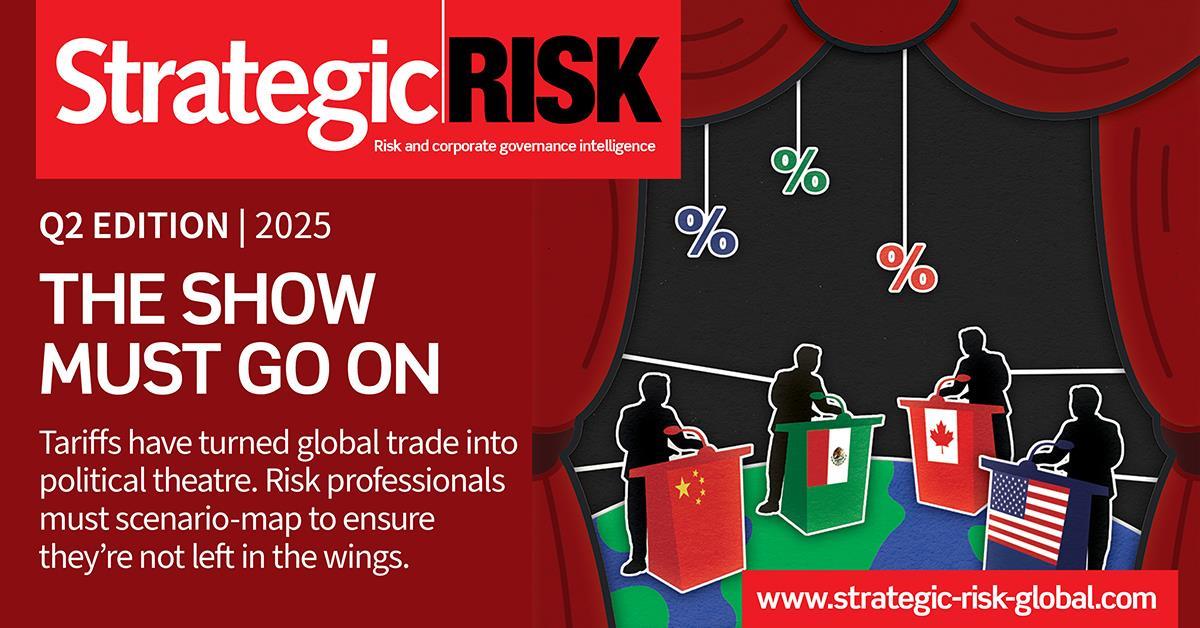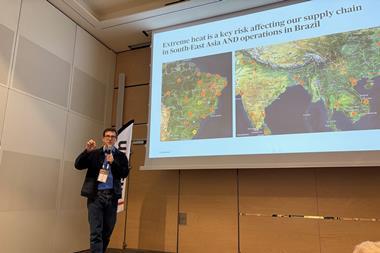The USA may still be the spiritual home of D&O litigation, but Europe is not too far behind. Class actions are becoming more common and the need to settle claims quickly is greater than ever. Luckily, say David Walters and Géraud Verhille, the D&O market has a history of adapting to a changing business world
The last 100 years have seen a steady increase in the statutory responsibilities facing the directors and officers of companies around the world, as well as a rising level of regulatory oversight. At every step of this journey, the D&O insurance market has sought to create solutions that mitigate those risks – demonstrating a genuine history of response to a changing need. This has never been more relevant.
While the USA remains the primary battleground in terms of D&O, Europe is slowly but surely catching up – with Germany, the Netherlands, the UK, France and Russia not far behind in terms of increasing liabilities and claims. In fact, in Germany the value of claims made against directors is currently estimated to be higher than the annual premium value (around €400m-€600m).
The beginning
In the UK – one of the first markets for D&O cover – policies can be traced back to the early 1930s. The triggers were the introduction of the US Securities Acts, which were intended to regulate issuers of securities and protect investors, and the 1927 UK Companies Act, which prohibited a company from indemnifying its directors against an act unless they could be proved to be acting fairly. These created a personal liability if a director was found liable, and therefore put their personal assets at risk. The result was that Lloyd’s of London introduced coverage for company directors and officers, although the risk was not perceived to be very high, and for the next four decades demand for cover remained low.
The 1970s: a surge in claims
The issue did not go away, however, and the late 1970s saw a flurry of claims in the USA, which caused European markets to look very carefully at the need for specialty coverage for the ‘personal financial protection’ of directors and officers. Certainly in France and the Netherlands, buyers began looking for cover for domestic risks, and all businesses – wherever they were located – with US exposures started to be concerned.
The focus on personal financial protection distinguished D&O insurance from other kinds of commercial insurance, which covered identified areas of corporate risk. For example, general liability insurance provided corporate insurance for bodily injury or property damage claims, while fidelity bonds afforded specified first-party coverage for losses corporations might incur due to certain acts of their officers, directors or employees.
D&O coverage, on the other hand, was not intended to be corporate insurance, much less an attempt to insure the liabilities caused to a corporation by the acts of its directors and officers. Typical D&O cover was structured in two parts: side A and side B. The former provided cover for an individual who had been accused of a wrongful act but could not be indemnified by the company, with the insurance cover paying for the legal defence.
On the other hand, if the company was permitted to pay the individual’s legal fees, then side B reimbursed the company for the costs they had incurred. In some European countries, indemnification by the company of its directors and officers for their legal expenses and any damage claims made against them are not permissible – France is a particular example of this.
The 1990s: reducing exclusions
The 1990s was a defining decade for D&O in terms of product development and market evolution. A number of US claims securities were brought against both directors and their corporations – traditionally not discussed under a D&O policy – all of whose defence was similar. The result was that there were debates about the allocation of costs between parties, the resolution of which was the creation of side C cover or ‘entity cover’ – for when the company was named in such a claim.
As the century turned, it saw Enron and WorldCom collapse spectacularly, followed in 2004 by Parmalat and Yukos. This meant the D&O market saw major claims hitting the balance sheets of many carriers. As well as the financial consequences for the insurers, there were unfortunate side effects for the insureds. The first was acrimony over policy coverage. With companies accessing the side C part of the policy, directors were concerned about whether there would be sufficient funds to cover them personally.
In addition, policies were being frozen by the courts as a corporate asset, which also meant they were not available for the individuals. So it could be argued that in solving one problem, the side C coverage had created another.
But, again, the market found a solution and an ‘order of payments’ clause was created, with individual claimants heading the list. There was also the creation of the side A-only policy market, which sought just to insure individual directors where all their corporate cover had been exhausted.
Another significant development in the 1990s was the sharp increase in the number of formal investigations being undertaken into the affairs of companies. It is worth asking: why was this a problem for the D&O market, when the cover is specifically designed for individuals, and the investigations were into the corporate entities? The key issue is that it was the directors who were usually called and had to give evidence – so they needed preparation and support, which could be time-consuming and expensive.
In response to this, the D&O market began to specifically include investigations in the cover. Today these are the source of a large proportion of D&O claims; this is true across Europe where the number of investigations from finance regulators on shareholder information or competition bodies has increased sharply. In addition, exclusions came under the spotlight in the 1990s.
Traditionally, anything that was illegal, or liabilities that ought to be covered by other polices (general and public liability, for example), were excluded by European D&O policies. But other exclusions were added as required, and it was not unusual to find upwards of 20 exclusions in a single policy. Some began to disappear in the early 1990s – for example, libel and slander, and breach of warranty exclusions. In other cases, issues started out being excluded, such as Y2K, but market pressure caused underwriters to change their minds. Equally, traditional ‘no nos’ such as environmental risks saw the number of exclusions reduced dramatically – or even removed completely.
Emerging risks
The global financial crisis has accentuated an already very active claims environment in Europe, comprising bankruptcies, criminal proceedings, regulatory investigations and individual shareholder litigation. Moreover, new sources of risks in the European D&O markets are emerging in three key areas: increasing class actions, faster settlements, and vulnerability to actions abroad.
Class actions rise
A key trend going forward is the likely increase in class actions, particularly in territories such as the UK, where litigation funds have now received permission to start operating. These firms fund litigation on behalf of investors and take a proportion of any settlement. Big wins are rare, so they tend to back a range of cases that they believe they are likely to win in order to spread their risk. Germany is a good example of a country that has become very litigious and, crucially, it has made important steps toward lowering barriers to entry, bringing in new legislation that means shareholders can now share the costs for bringing an action. The Capital Markets Model Proceeding Act provides a mechanism by which, if a shareholder sues a German company and other shareholders feel similarly aggrieved, they can join the proceeding and share the costs. This effectively reduces the cost of entry, streamlines the process and enables those who would not normally bring a lawsuit to have the option to do so.
Deutsche Telekom was one of the first companies to feel the effects of this. A landmark lawsuit was brought by 16,000 shareholders, who sued for up to €80m as they believed the company had inflated the value of its assets and misled them.
Speeding up settlements
In addition to collective actions being initiated by associations of shareholders, efforts are being made to increase the speed of claims settlements, which is also encouraging mass actions to be brought against companies and directors.
For example, the Dutch Class Action Financial Settlement Act has been brought in to facilitate the effective and efficient settlement of mass damages claims. For claimants, this offers the opportunity to obtain a settlement relatively quickly, rather than facing years of legal proceedings, making the prospect of litigation less daunting. For companies and directors that may be targeted by such claims, the Act means that they may face just one mass proceeding rather than multiple cases and associated defence costs.
In a high-profile example, Royal Dutch Shell in 2007 made a settlement relating to the company’s recategorisations of its ‘proved’ oil and gas reserves with non-US investors. Shell was ordered to pay $352.6m (€288m) plus administrative costs to the non-US shareholder, in a relatively short timeframe.
This proved that the Act could really deliver when it came to streamlining and speeding up the claims process, especially as the non- US portion was settled before the US claim – unusual for such a case.
Accountability abroad
The USA continues to lead the way in terms of rising liabilities and vulnerability to shareholder actions for directors, so it may hold important clues for how trends around the world will develop.
Crucially, suits against directors of non-US companies in the USA is a growing concern. Even 10 years ago, the chances of litigation being brought against a European company or its directors in a US court were relatively slim. But the increasing globalization of finance, and an American Plaintiffs
Bar actively looking for markets that offer greater volatility, along with stronger co-operation between regulatory bodies worldwide, make it increasingly likely that more corporate officers will face a lawsuit at some point in their career.
In fact in 2007 alone, class actions were brought against 25 international companies – up from just six in 1997.
Such lawsuits, which allege violations of US securities laws, are typically brought in the USA against a foreign issuer or its directors and officers, and companies that have fallen foul of this already include Credit Suisse, Deutsche Bank and SocGen.
As part of this, there is a growing trend for jail terms to be handed down if a cartel is found to have affected US customers or competitors. Previously, individuals were imprisoned for relatively short periods and in many cases only one director was imprisoned per leading cartelist. But there has now been a shift towards several executives being jailed and for longer periods of time.
Looking ahead
Such developments mean that policy requirements will continue to evolve and underwriters will need to carry on the tradition of responding by making improvements to policy wordings and terms.
Underwriters will also need to ensure that, if they are doing business abroad, they have a thorough understanding of the cultural and legal framework in each of the territories in which they operate.
As D&O is a market that has a history of responding positively to the changing regulatory, legislative and business environment, it should be more than capable of rising to these challenges and beyond.
Postscript
David Walters is vice-president of financial lines at Chartis Insurance UK Ltd, and Géraud Verhille is chief underwriting officer of financial lines at Chartis Europe SA.





















No comments yet